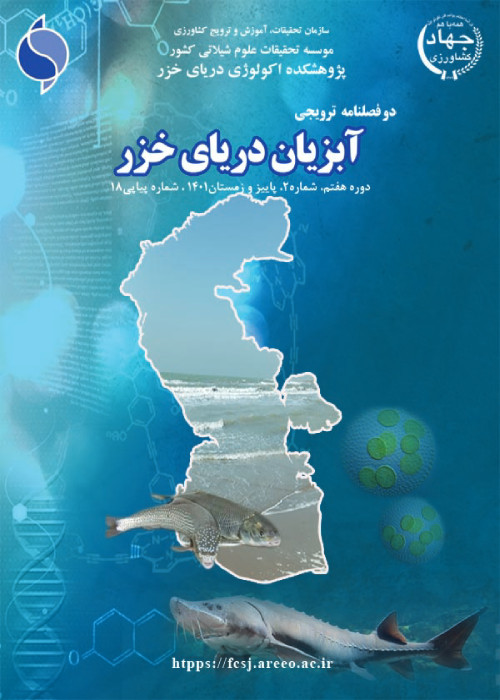Determining the health of muscle tissue of Liza aurata to the radioactive material cesium-137 in the southern coasts of the Caspian Sea
The cesium-137 (Cs-137) is one of the most dangerous fission fragments from fissionable nuclides U-235, which it half-life is about 30/17 years. The Chernobyl accident was diffused a high concentration of radioactive pollutants especially Cs-137 in different areas. Since Iran is very close to accident area, it is necessary to study the contamination of radioactive material in the environment and living organisms. The research covers the health of muscle tissue of liza aurata to pollution of Cs-137 of center region in southern part of the Caspian sea in 2008. In this study 60 piece of liza aurata were obtained from fishing sites in Mazandaran province (in the central region of the southern coasts of the Caspian Sea). The Cs-137 activity measurement of muscle tissue was carried out by using of gamma spectrometry. The results of Cs-137 was compared by the International Atomic Energy Agency (IAEA) and the World Health Organization (WHO) at 10 Bk/Kg. Based on the results, Cesium-137 levels in muscle tissue were less than the detection limit in more than 90% of the fish samples. The radioactive material was within the permissible and standard range in the rest of the fishes (8.3%). This study has been confirmed the health of muscle tissue of Liza aurata muscle to pollution of radioactive Cs-137 in period and area of stud
Radioactive , Cs-137 , Liza aurata , Muscle , Caspian Sea
-
Microplastic ingestion by Psettodes erumei in the northern Oman Sea
M. Mobasheri*, L. Taghavi, T. Valinassab, H. Nasrollahzadeh Saravi
Iranian Journal of Fisheries Sciences, Jan 2025 -
Changes in Concentration of Poly Aromatic Hydrocarbons (PAHs) at the surface sediments of the Iranian coast Caspian Sea up to 30 m depth (2018-2019)
Hourieh Younesipour, *, Mohammadali Afraei, , Ahad Ahmadnejad, Marzieh Rashidi Goolroyeh
Iranian Scientific Fisheries Journal, -
Study on Resistance and Non-Resistance parts of copper, cadmium, lead and mercury metals based on the sequential extraction method in the surface sediments of the southern basin of the Caspian Sea.
, *, Hourieh Younesipour, Sharareh Firouzkandian, Marzieh Rashidi Golrooye
Journal of Earth Sciences,




